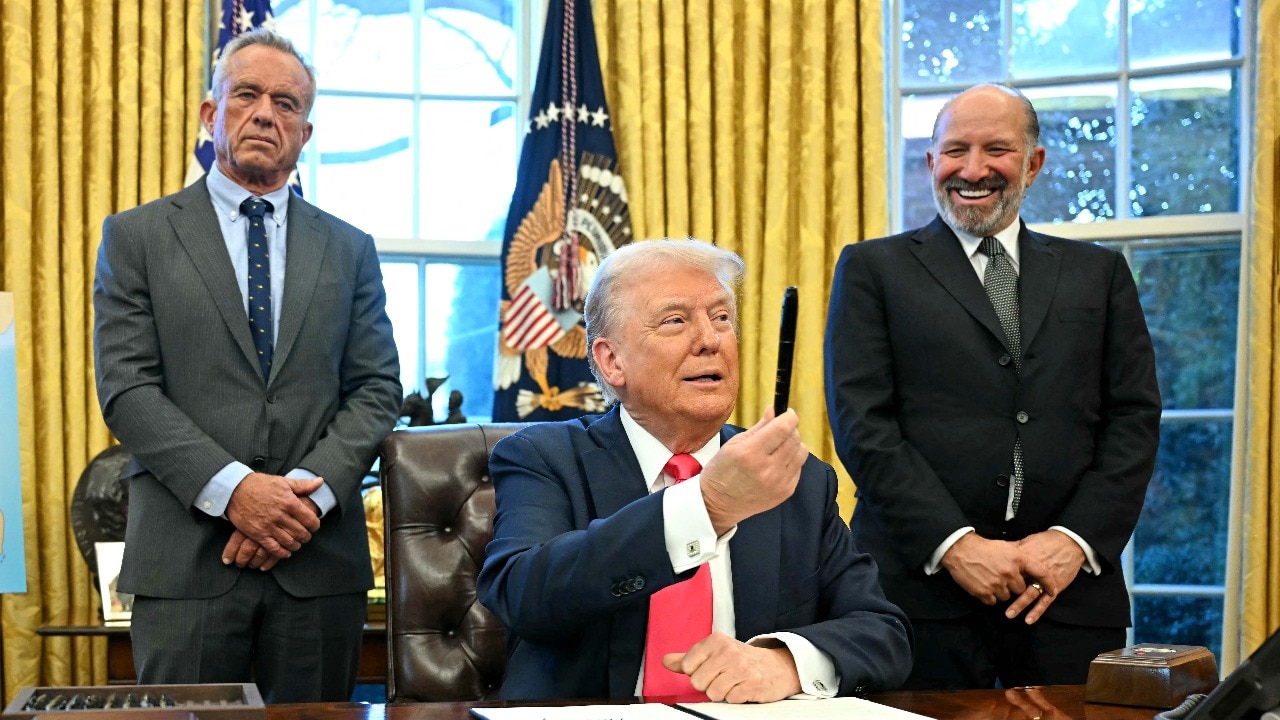President Trump announced “Liberation Day” on April 2, implementing reciprocal tariffs on over 180 countries, including a 27% tariff on India. Despite potential economic fallout, Trump and Commerce Secretary Howard Lutnick promote aggressive tariffs as a means to reduce dependency on foreign goods. Lutnick, seen as a polarizing figure, is poised to take the blame if these measures fail. Concerns over increased costs for American consumers and the risk of economic recession have arisen, as Trump’s tariff policies create uncertainty in global trade. While some in the administration advocate for targeted approaches, Trump relishes the chaos and power dynamics.
US President Donald Trump has commemorated his “Liberation Day” by imposing reciprocal tariffs on numerous countries, including India. The tariff for India was established at 27 percent, and Trump described it as a “kind reciprocal”. However, what if these measures do not achieve their intended results? The Trump administration has already identified a scapegoat, and it happens to be Commerce Secretary Howard Lutnick. Several individuals within Trump’s inner circle are reportedly ready to shift the blame onto him, according to sources close to the administration. But what is the reason behind targeting Lutnick?
The Trump administration declared reciprocal tariffs on more than 180 countries on April 2. As for India, businesses faced a race to evaluate the impact, as goods arriving from India to the US would incur a minimum 27 percent levy starting April 9.
Trump has termed it “Liberation Day,” vowing it will put an end to US dependence on foreign goods.
In times of trouble, the Trump administration has a scapegoat in Lutnick ready to be used.
“I think people would derive particular satisfaction from blaming him,” an insider informed Politico.
LUTNICK IS ‘A NEW VOICE AT THE TABLE PUSHING CRAZY IDEAS’
Lutnick has been a key proponent of Trump’s aggressive tariff strategy. He has advocated for even more stringent measures, believing they will help reduce the deficit and stabilize the budget.
International manufacturers might pass on the extra costs from reciprocal tariffs to American businesses and consumers, leading to increased prices for everyday products.
Disregarding warnings from economists regarding potential market crashes or a recession, Lutnick is adamant that tariffs will “generate revenue” — even though it’s likely that the burden will fall on American businesses and consumers.
He is not merely defending the policy; he’s actively promoting the notion of steeper tariffs, according to a source close to Trump’s team, as reported by Politico.
Treasury Secretary Scott Bessent remains a voice of caution, advocating for more focused tariffs.
Trade advisor Peter Navarro, a long-time supporter of tariffs, is maintaining the status quo. In contrast, Lutnick is “shaking things up”.
“A new voice at the table advocating for unconventional ideas,” described one insider. “I don’t know anyone who isn’t frustrated with him.”
The official noted that Lutnick’s radical proposals have ruffled the feathers of several significant figures.
TRUMP’S INNER CIRCLE SAYS ITS ALIGNED. WHAT ABOUT LUTNICK?
The White House, however, insists that all administration members are united in their mission to bolster American industries and workers.
“President Trump has assembled the most capable trade team in modern American history to revive American greatness,” stated spokesperson Kush Desai. “They are diligently following President Trump’s playbook to serve the American people.”
This statement comes amid concerns over past market instability when Trump briefly enforced a 25 percent tariff on Canada and Mexico. The tariffs affecting over 180 countries are expected to significantly impact both the American and global economies.
While Trump has frequently referenced the reciprocal tariff plan, Treasury Secretary Scott Bessent has suggested a more strategic, targeted approach that focuses on the nation’s largest trading partners.
This was evident in the reciprocal tariffs concerning India.
“They (India) charge us 52%, and we’ve been charging almost nothing for years,” Trump said during his speech unveiling the new tariffs. With India, the trade deficit amounts to $46 billion.
A Moody’s analyst cautioned that a blanket 20% tariff could be catastrophic, heavily affecting lower-income consumers and businesses reliant on imports. The repercussions could destabilize the stock market, lead to job losses, and push the US into a full-blown recession.
Not long ago, reports surfaced detailing growing frustration among White House staff regarding Lutnick’s frequent media appearances and his close relationship with Trump. Now, with economic stakes at an all-time high, that frustration has escalated into outright alarm.
“Everyone” in Washington was bracing for April 2, a White House ally told Politico. The corporate sector was on high alert, anticipating tariffs and hoping that the damage would be substantial enough to prompt a quick reversal, the report noted.
Trump, however, thrives on chaos. He “enjoys the shock and awe,” a White House official remarked, and intends to capitalize on it. “Every country should panic and call. Trump wants to hear you plead and promise you’ll strike a deal.”
Trump aspires to feel like the most powerful individual on the planet. In light of domestic challenges, his inner circle has a fall guy ready. Lutnick has stepped into that role, and Trump’s aides are prepared to wield the guillotine.
